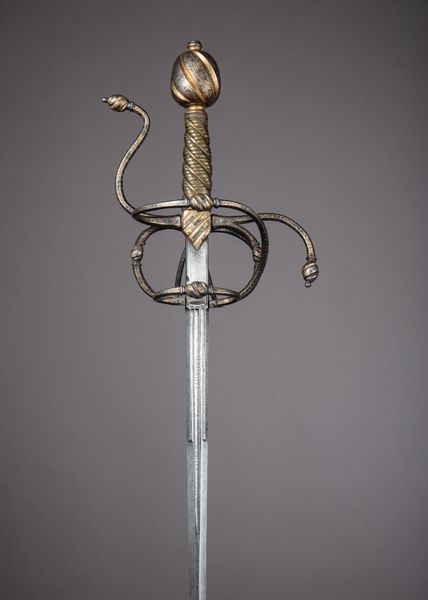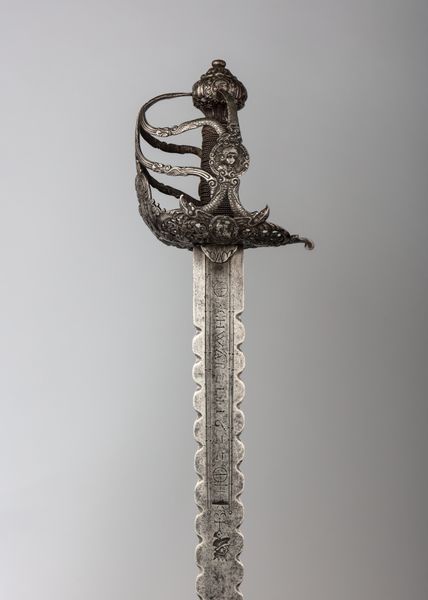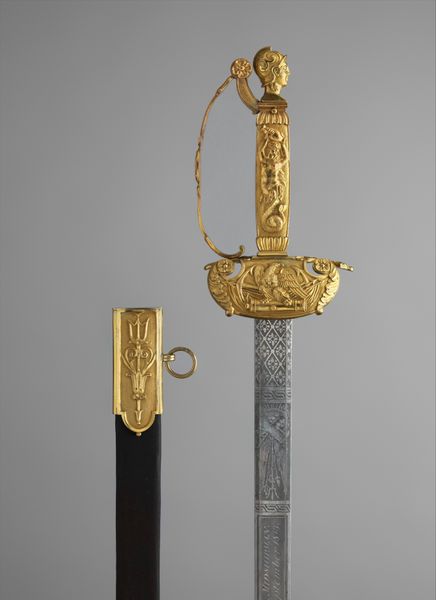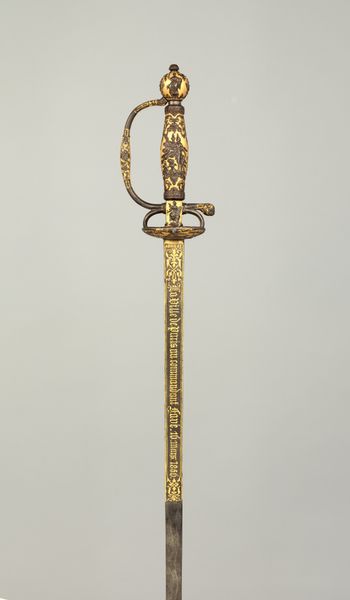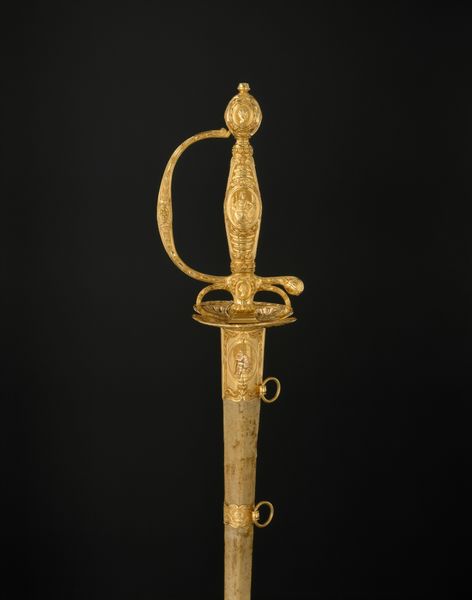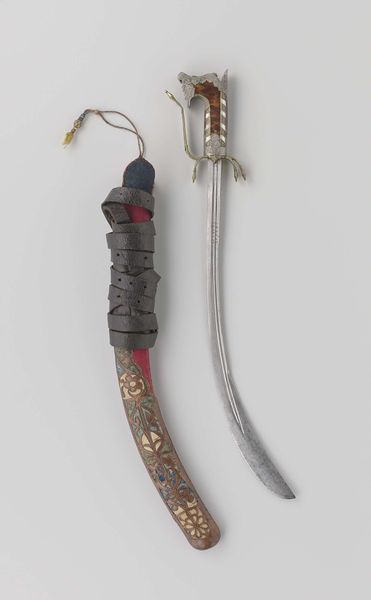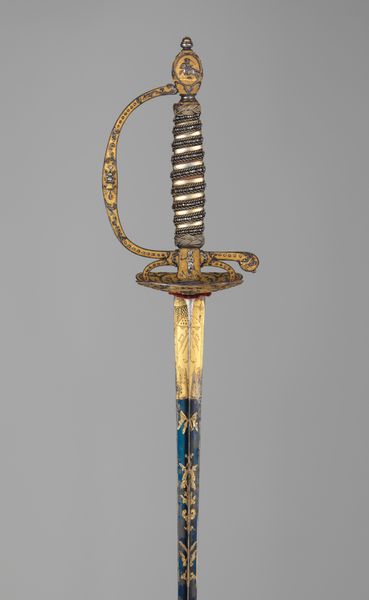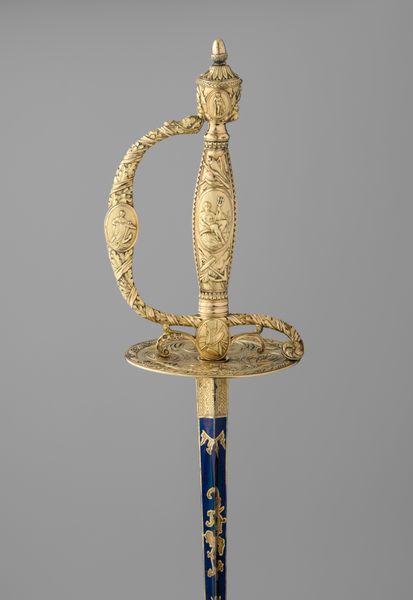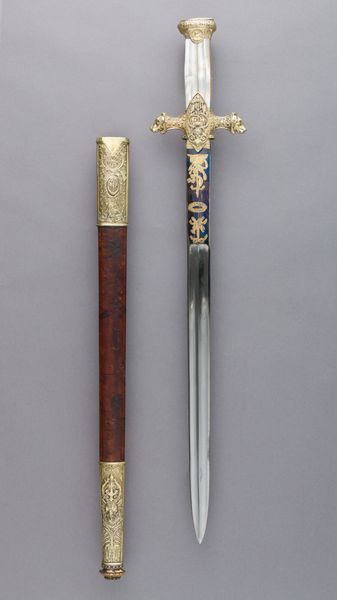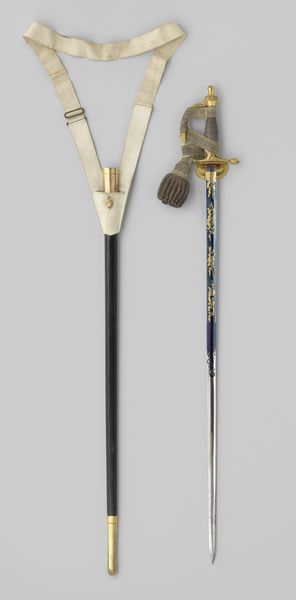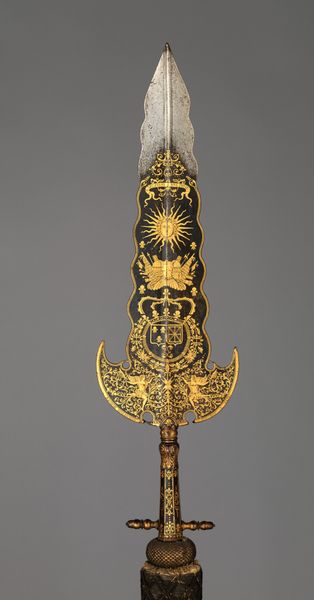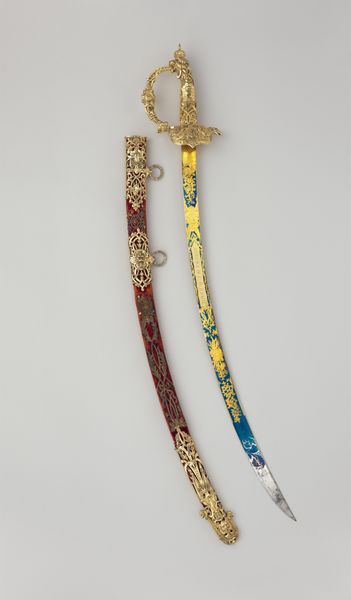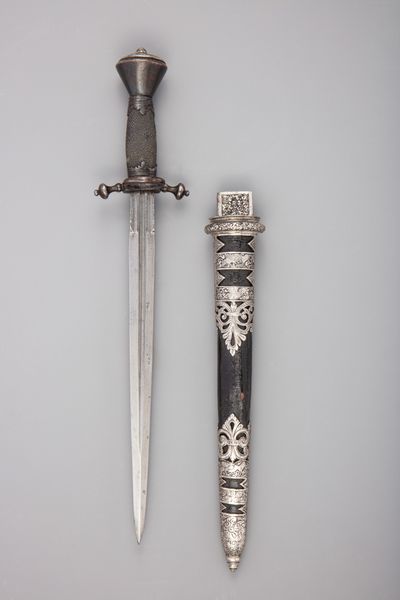
carving, metal, gold, sculpture
#
carving
#
metal
#
sculpture
#
gold
#
mannerism
#
11_renaissance
#
sculpture
#
decorative-art
#
miniature
Dimensions: 8 1/4 x 2 1/4 x 1 in. (20.96 x 5.72 x 2.54 cm)
Copyright: Public Domain
This knife and fork are made from steel, gold, silver and coral. Though anonymous, its craftsmanship suggests it was likely made for someone of considerable means. These objects would have been powerful visual signifiers. Coral, which is prominently featured on the handle, has been used throughout history as a talisman. For instance, in Renaissance Europe, coral was often worn to protect children from harm. While these objects serve a functional purpose, they are also incredibly ornate, adorned with intricate gold and silver details. The combination of functionality and opulence is no accident; it speaks to the social rituals of dining and display of wealth within the upper classes. Historical societies and museum collections are excellent places to learn more about this history. By studying similar objects, along with period documents, we gain a richer understanding of not only this object, but the people and culture that produced it.
Comments
minneapolisinstituteofart almost 2 years ago
⋮
This preciously decorated and extremely rare coral cutlery set from the late 1500s would have been only used on extraordinary occasions, such as a wedding, a knighting or a state visit. In the late Renaissance, the guests would typically bring their own cutlery to formal dinners. An expensively decorated cutlery set would have elicited the host's and other guests' admiration. Besides, coral was believed to be an antidote against poison. Therefore, in the view of its time this set of cutlery would have offered its bearer special protection during a meal at the table of a rival family or of an untrustworthy foreign ruler.
Join the conversation
Join millions of artists and users on Artera today and experience the ultimate creative platform.
